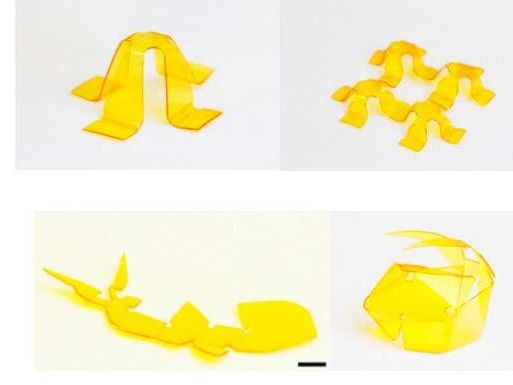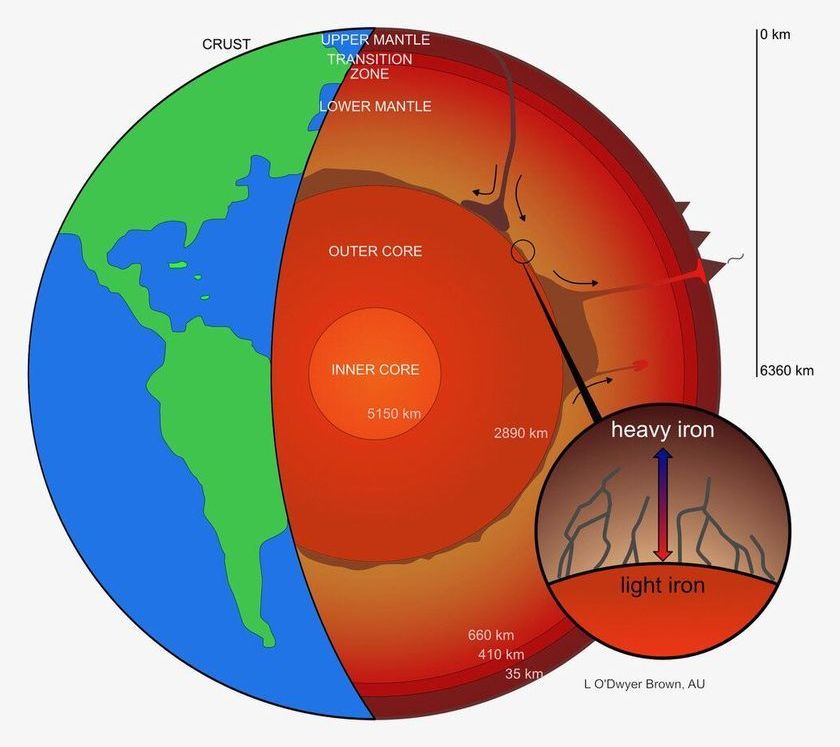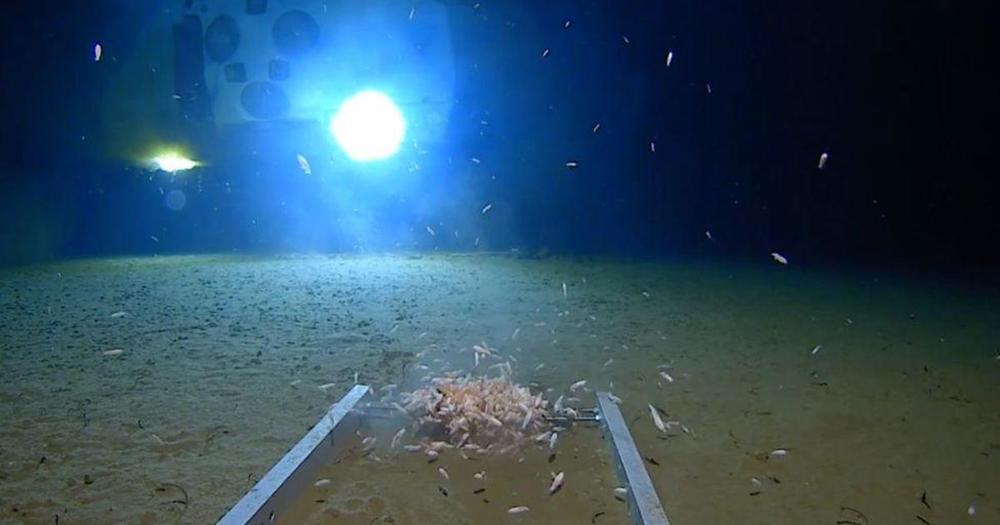Archive for the ‘materials’ category: Page 195
Apr 17, 2020
Phase-change fabric both warms and cools its wearer
Posted by Gerard Bain in category: materials
The more clothing that you wear, the warmer you are … right? Well actually, scientists have developed a new textile that both warms wearers in cold environments, and cools them down when things heat up.
The experimental material was developed at China’s Huazhong University of Science and Technology, by a team led by Prof. Guangming Tao. It’s made by first freeze-spinning silk and chitosan, forming fibers with a porous microstructure – chitosan, incidentally, is a highly useful natural compound found in crustacean shells.
Next, the pores within the fibers are filled with polyethylene glycol (PEG), which is a phase-change material that takes the form of a liquid when warm, and a solid when cool. Finally, the fibers are coated with an organic polymer known as polydimethylsiloxane, to keep the PEG from leaking out while in its liquid state.
Apr 15, 2020
Behold the “Quasar Tsunami,” Which Can Kill an Entire Galaxy
Posted by Quinn Sena in categories: cosmology, materials
O,.o possible higgs field containment device could stop the rupture and other ways to destroy the root of the problem too.
New data from NASA’s Hubble Space Telescope details what may be the most powerful phenomena in the universe: the “quasar tsunami,” a cosmic storm of such terrifying proportions that it can tear apart an entire galaxy.
“No other phenomena carries more mechanical energy,” said principal investigator Nahum Arav of Virginia Tech in a statement. “The winds are pushing hundreds of solar masses of material each year. The amount of mechanical energy that these outflows carry is up to several hundreds of times higher than the luminosity of the entire Milky Way galaxy.”
Continue reading “Behold the ‘Quasar Tsunami,’ Which Can Kill an Entire Galaxy” »
Apr 14, 2020
A new material to print mechanically robust and shape-shifting structures
Posted by Saúl Morales Rodriguéz in categories: 3D printing, materials
In recent years, 3D printing has opened up interesting new possibilities for the large-scale production of electronic components, as well as of a variety of other objects. To this end, research teams worldwide have been trying to create materials and structures that can easily change shape, as these could be particularly useful for 3D printing applications.
Although many of the programmable and shape-shifting materials developed so far have proved to be promising for 3D printing, they are often not mechanically robust. This makes them unideal for printing objects that are resistant to a lot of weight or strain.
To overcome this limitation, researchers at Georgia Institute of Technology, Peking University and Beijing Institute of Technology have recently proposed a new shape-morphing material system that is also mechanically robust. This new material, created via the volatilization of a volatile component that has not fully reacted, was presented in a paper published in ACS Applied Materials & Interfaces. The lead authors of this paper are Qiang Zhang and Xiao Kuang.
Apr 14, 2020
Discovery offers new avenue for next-generation data storage
Posted by Saúl Morales Rodriguéz in categories: computing, materials
The demands for data storage and processing have grown exponentially as the world becomes increasingly connected, emphasizing the need for new materials capable of more efficient data storage and data processing.
An international team of researchers, led by physicist Paul Ching-Wu Chu, founding director of the Texas Center for Superconductivity at the University of Houston, is reporting a new compound capable of maintaining its skyrmion properties at room temperature through the use of high pressure. The results also suggest the potential for using chemical pressure to maintain the properties at ambient pressure, offering promise for commercial applications.
The work is described in the Proceedings of the National Academy of Sciences.
Apr 14, 2020
Heavy iron isotopes leaking from Earth’s core
Posted by Quinn Sena in category: materials
Could use magnetism to pull the iron back inside. O,.,o.
Earth’s molten core may be leaking iron, according to researchers who analyzed how iron behaves inside our planet.
The boundary between the liquid iron core and the rocky mantle is located some 1,800 miles (2,900 km) below Earth’s surface. At this transition, the temperature drops by more than a thousand degrees from the hotter core to the cooler mantle.
Continue reading “Heavy iron isotopes leaking from Earth’s core” »
Apr 14, 2020
Military labs test plastic billed as ‘armor’ against lasers
Posted by Quinn Sena in category: materials
Circa 1988 o.,o.
While the Pentagon is busy developing laser weapons, a small California company claims it has discovered a type of plastic that acts as armor against laser energy. The company stumbled on the material by accident and doesn’t fully understand why it works. Samples have been sent to several United States military labs, which are running tests to see how strong a laser beam the plastic can withstand.
“We’re trying to find out the full magnitude of its capabilities,” says Slava Harlamor, president of Harlamor-Schadeck Company, which developed the material.
Continue reading “Military labs test plastic billed as ‘armor’ against lasers” »
Apr 13, 2020
Mutant Enzyme Recycles Plastic in Hours, Could Revolutionize Recycling Industry
Posted by Kelvin Dafiaghor in categories: materials, sustainability
Scientists have engineered a mutant enzyme that converts 90 percent of plastic bottles back to pristine starting materials that can then be used to produce new high-quality bottles in just hours. The discovery could revolutionize the recycling industry, which currently saves about 30 percent of PET plastics from landfills, reported Science Magazine.
Apr 10, 2020
American breaks record with deepest submarine dive ever, finds plastic waste
Posted by Quinn Sena in category: materials
The diver’s team found four new species and something else no other expedition has seen — pollution.
Apr 8, 2020
Cell muscle movements visualised for first time
Posted by Genevieve Klien in categories: materials, nanotechnology
The movements of cell muscles in the form of tiny filaments of proteins have been visualised at unprecedented detail by University of Warwick scientists.
In a study published in the Biophysical Journal, scientists from the University’s Department of Physics and Warwick Medical School have used a new microscopy technique to analyse the molecular motors inside cells that allow them to move and reshape themselves, potentially providing new insights that could inform the development of new smart materials.
Myosin is a protein that forms the motor filaments that give a cell stability and are involved in remodelling the actin cortex inside the cell. The actin cortex is much like the backbone of the cell and gives it its shape, while the myosin filaments are similar to muscles. By ‘flexing’, they enable the cell to exert forces outside of it and to propagate.

















